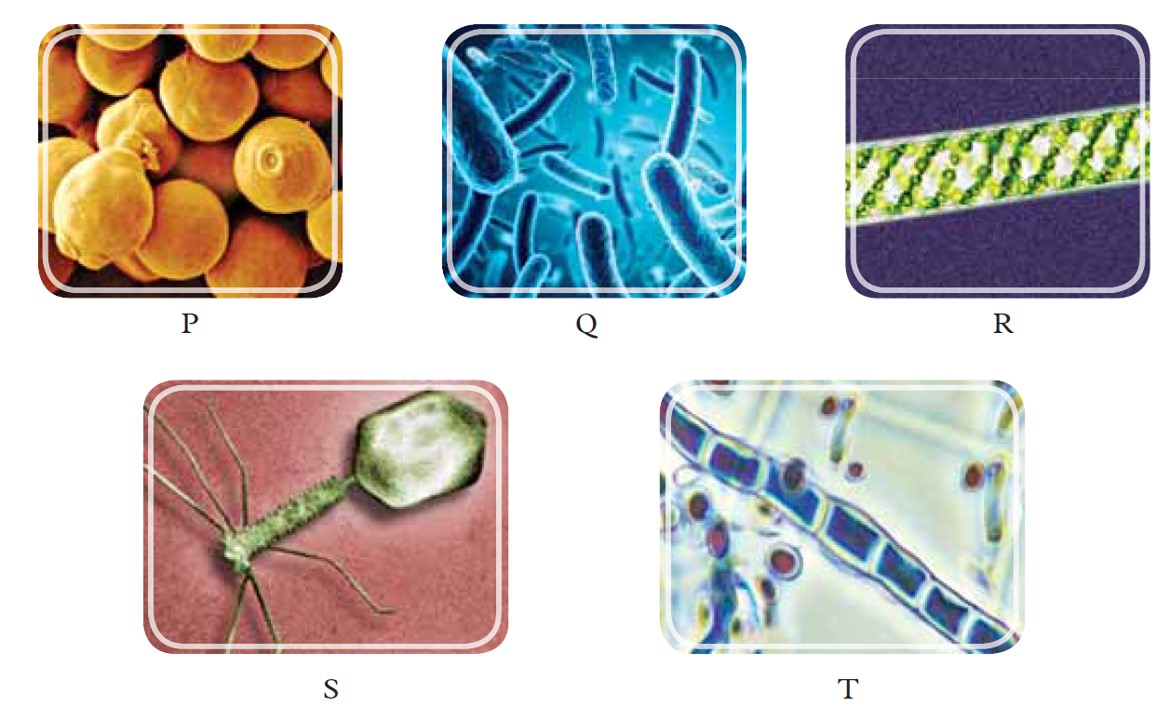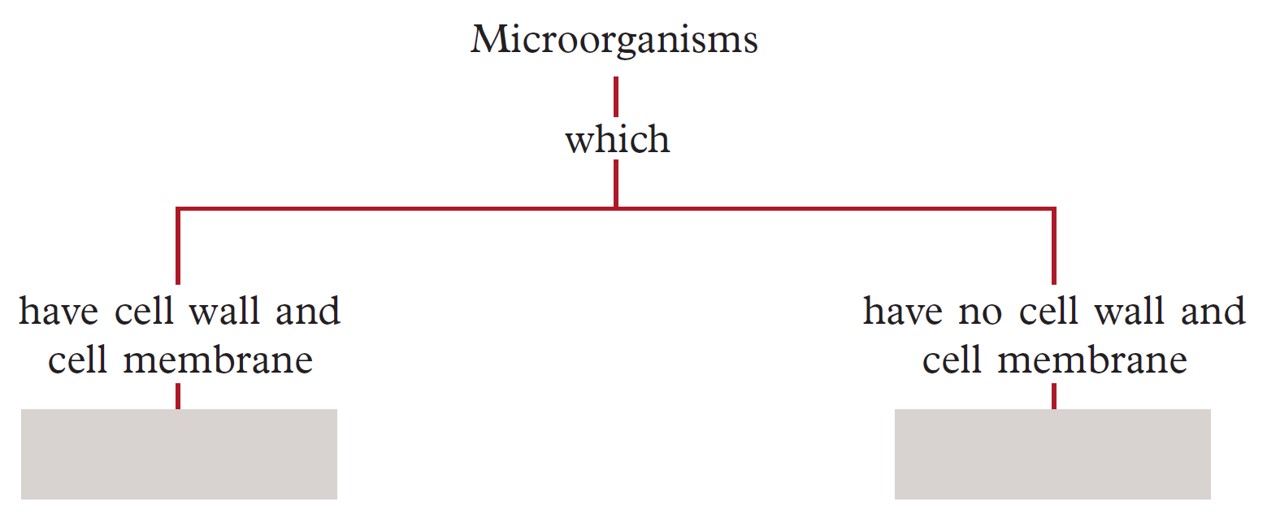Question 2:
Figure 2 shows microorganisms P, Q, R, S and T.
 Figure 2
Figure 2
(i) have cell wall and cell membrane
(ii) have no cell wall and cell membrane.

(b) Name the group of microorganisms that has no cell wall and cell membrane.
(c) (i) Name microorganism P.
(ii) Is microorganism P a useful microorganism or a pathogen? Explain your answer.
Answer:
(a) Have cell wall and cell membrane : P, Q, R and T
Have no cell wall and cell membrane : S
Figure 2 shows microorganisms P, Q, R, S and T.
 Figure 2
Figure 2
(a)
Classify P, Q, R, S and T based on the following characteristics:(i) have cell wall and cell membrane
(ii) have no cell wall and cell membrane.

(b) Name the group of microorganisms that has no cell wall and cell membrane.
(c) (i) Name microorganism P.
(ii) Is microorganism P a useful microorganism or a pathogen? Explain your answer.
Answer:
(a) Have cell wall and cell membrane : P, Q, R and T
Have no cell wall and cell membrane : S
(b) Virus
(c)(i) Yeast
(c)(ii) Microorganism P is a useful microorganism because it is used to make food such as bread. Microorganism P is not a pathogen because it does not cause disease.